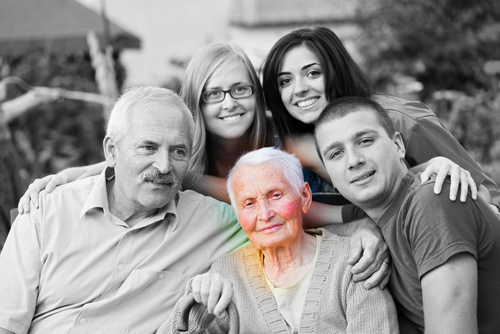5.Euthanasia is properly regulated.

4.Everyone has a right to a good death, therefore a good death must not be denied to those who want one.

Nobody thinks of their death and desires it to be extremely painful or horrible. Rational human beings desire a good, dignified end to an ideally long and fruitful life. Circumstance, like luck, may not always be in your favor. It may not even be a terminal disease, which is so frequently used in pro-euthanasia arguments. It can be as savage as a freak accident or as simple as falling down the stairs to put you in a world of excruciating pain. While this is never to be wished on anyone, for those that have had the misfortune of being diagnosed with a terminal or painfully debilitating disease must have a choice out of it. Do we, who so desire a good death, have the right to judge others' state when we know nothing of it? Do we have the right to compare their experiences day by day, having experienced none of them, and say that they don't deserve to die with dignity, the way they want to die? The answer is of course, no, we have no right to deny them the dignified death that we ourselves naturally desire. To do so would be selfish and we would effectively be imposing our own desires on that person, thereby restricting their freedom to self-determine even if it is in the most basic sense.
3.Euthanasia does not shorten lifespans by as much as is portrayed.

Many arguments opposing euthanasia are based on the premise that the patient's life should be preserved because of the possibility of their recovery. Statistics however, paint a different picture. A Dutch survey conducted in 1991 showed that 86% of Euthanasia cases only shortened the life of the patient by a maximum of 1 week. The standard time it shortened their life was by a few hours only. This clearly shows that terminal illness is statistically terminal. Add in the fact that in the majority of these cases, the patients were in extreme agony, the numbers show you that terminally ill patients are using euthanasia to end the suffering where they would have had near impossible chances of recovery. This is not the same as the ideal painted by opponents of euthanasia, wherein the patient may have a chance to survive and make a miraculous recovery. It is because the numbers are so heavily indicative of euthanasia as an out for terminally ill patients in terrible agony that it must be allowed as an option to end their suffering.
2.Euthanasia saves lives.

Sound shocking? Consider this: a 2005 study of euthanasia in the Netherlands found that 0.4% of all euthanasia was done without consent from the patient. By the time this study was done, euthanasia had been legalized in the Netherlands. Now consider another study done in 1991 which was done before euthanasia was legalized which indicated that 0.8% of euthanasia done in the Netherlands was done without the patients consent. This shows that the legalization of euthanasia actually had the reverse of the expected effect and cut the unacceptable practice of no consent euthanasia in half. By these numbers, euthanasia has in fact saved lives since it now provides a protected and regulated framework with which doctors must first obtain explicit consent before conducting euthanasia. This same framework makes it more difficult and less grey for those seeking to perform euthanasia with impure or irresponsible intentions.
1.The Hippocratic oath supports euthanasia.

Most people misinterpret the Hippocratic oath as being against euthanasia. The key element of the oath is that the physician must protect the wellbeing of their patient, hence the maxim "do no harm" commonly interpreted to be a summation of the oath. Most interpretations of the "harm" element are however taken to literally refer to the patient's life. It can be argued that harm in this case refers to the wellbeing of the patient, which includes his life. However in cases where it is a choice between intense suffering or death, it can be argued that the physician is doing more harm to the patient by not allowing them to die. While this argument can go either way, updated interpretations of the Hippocratic oath do include a segment that concerns taking life as well as preserving it:
审校:嘉珈Alison 来源:前十网












